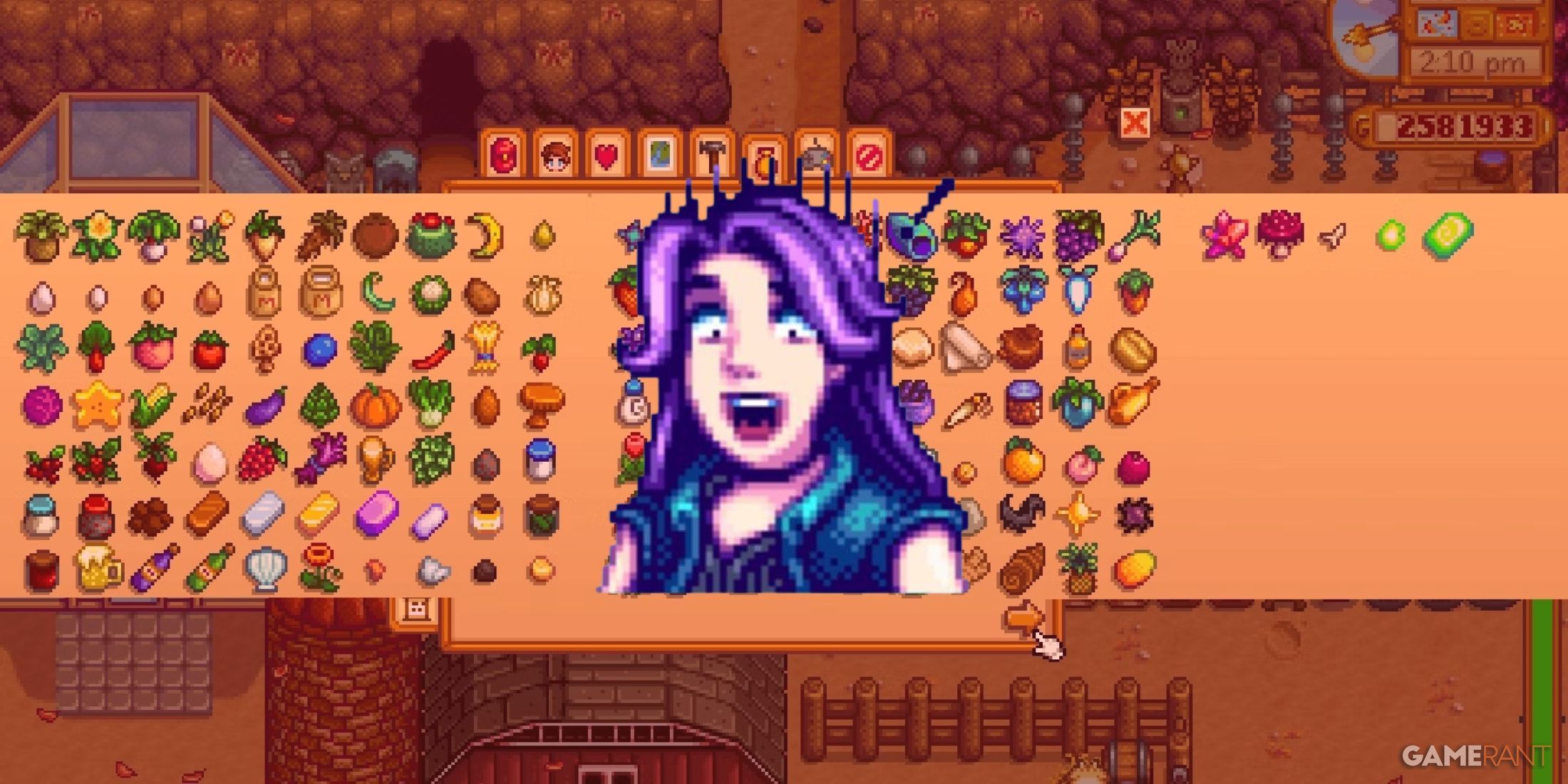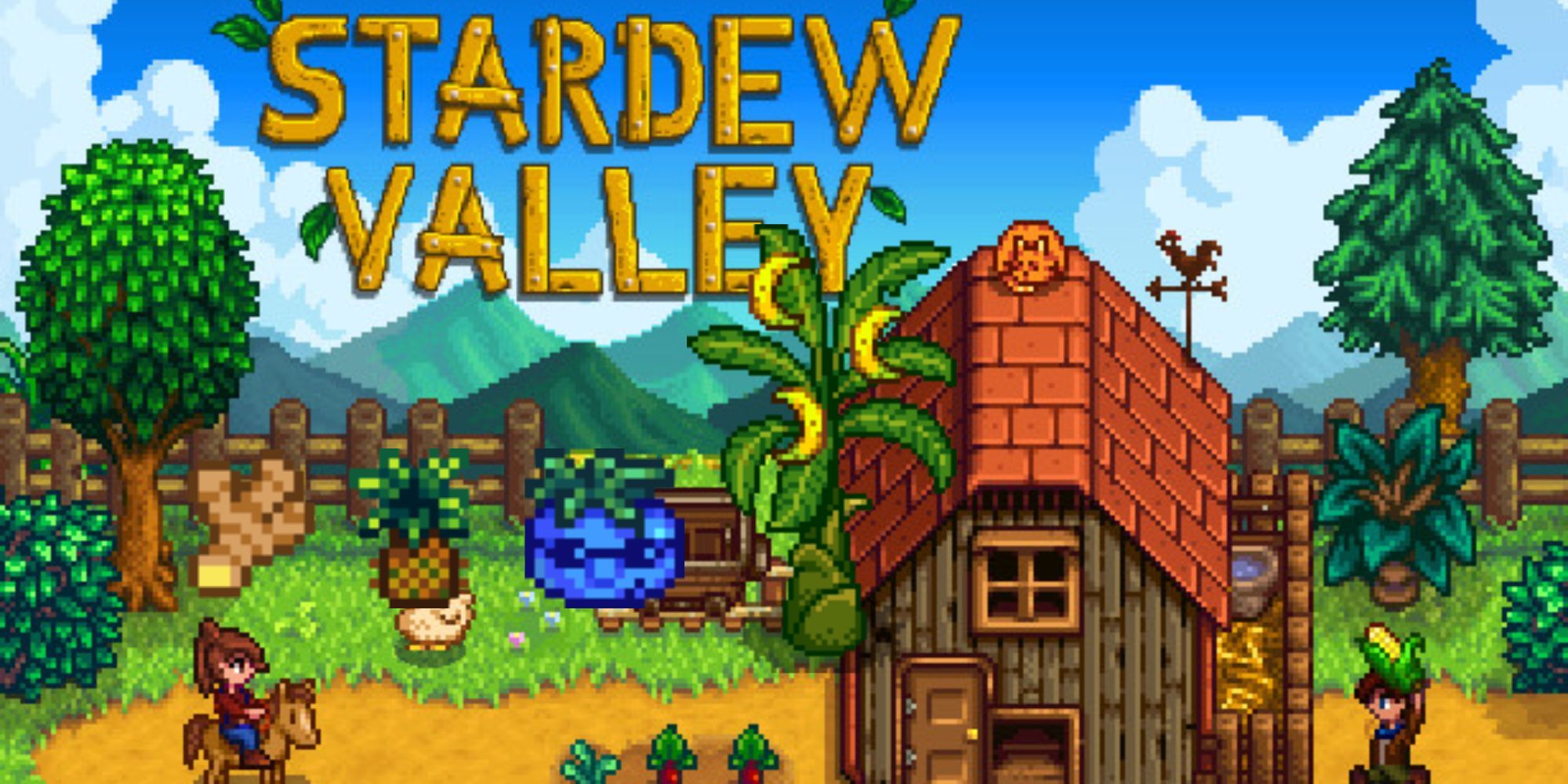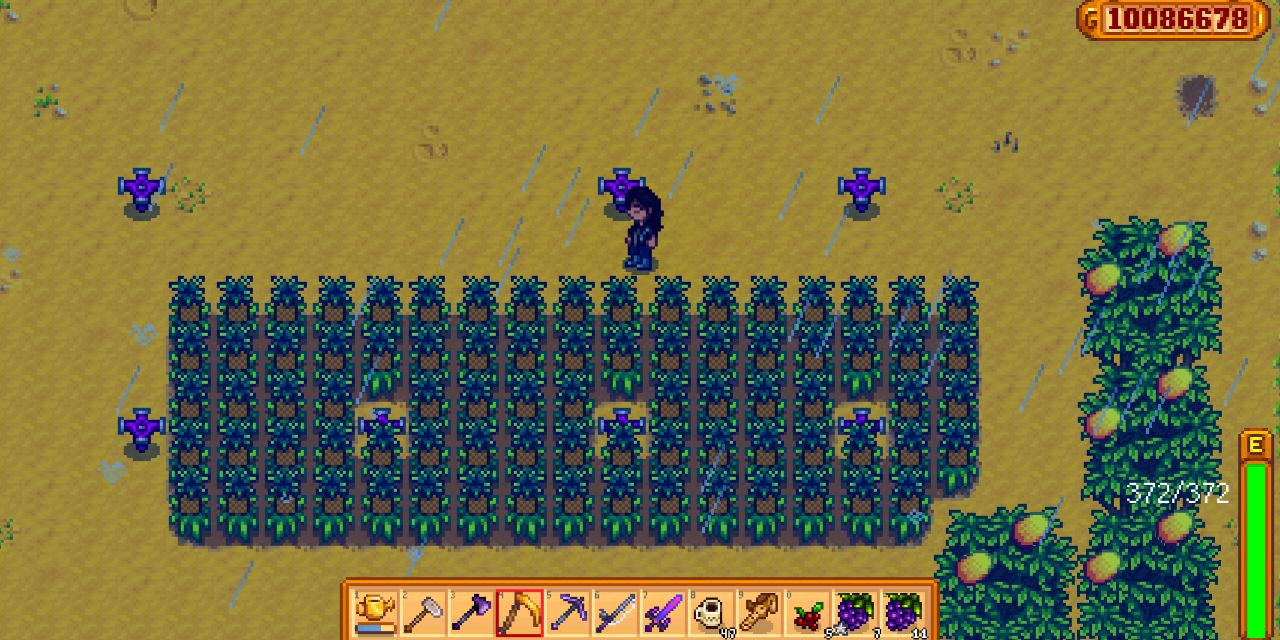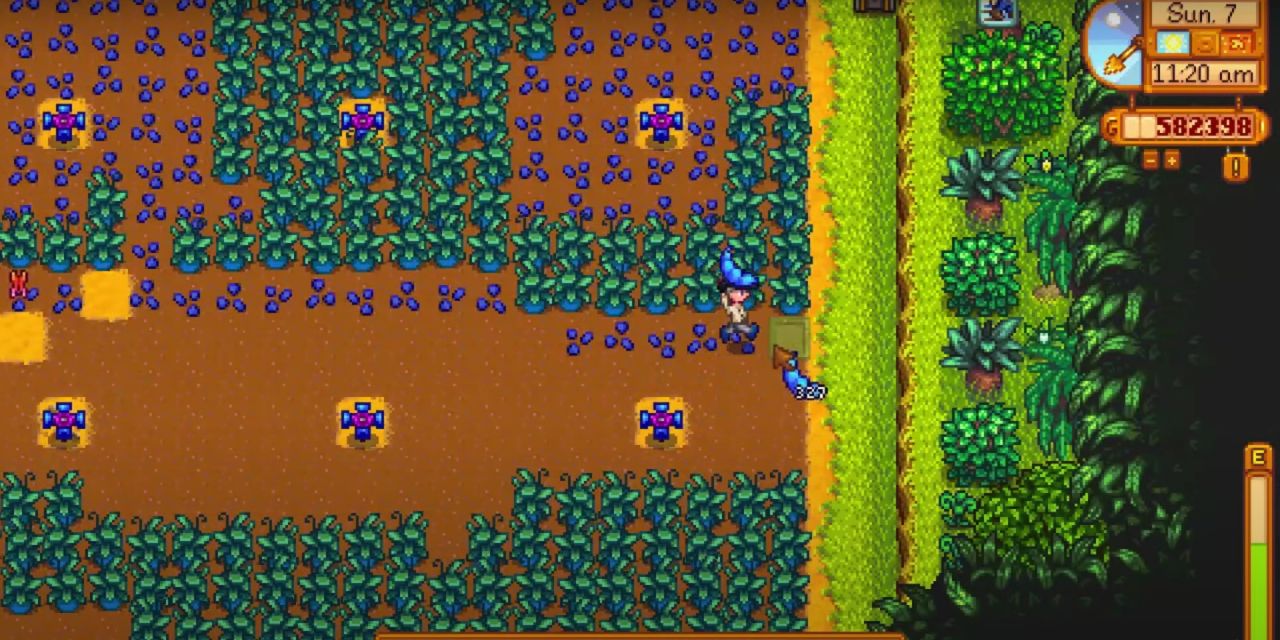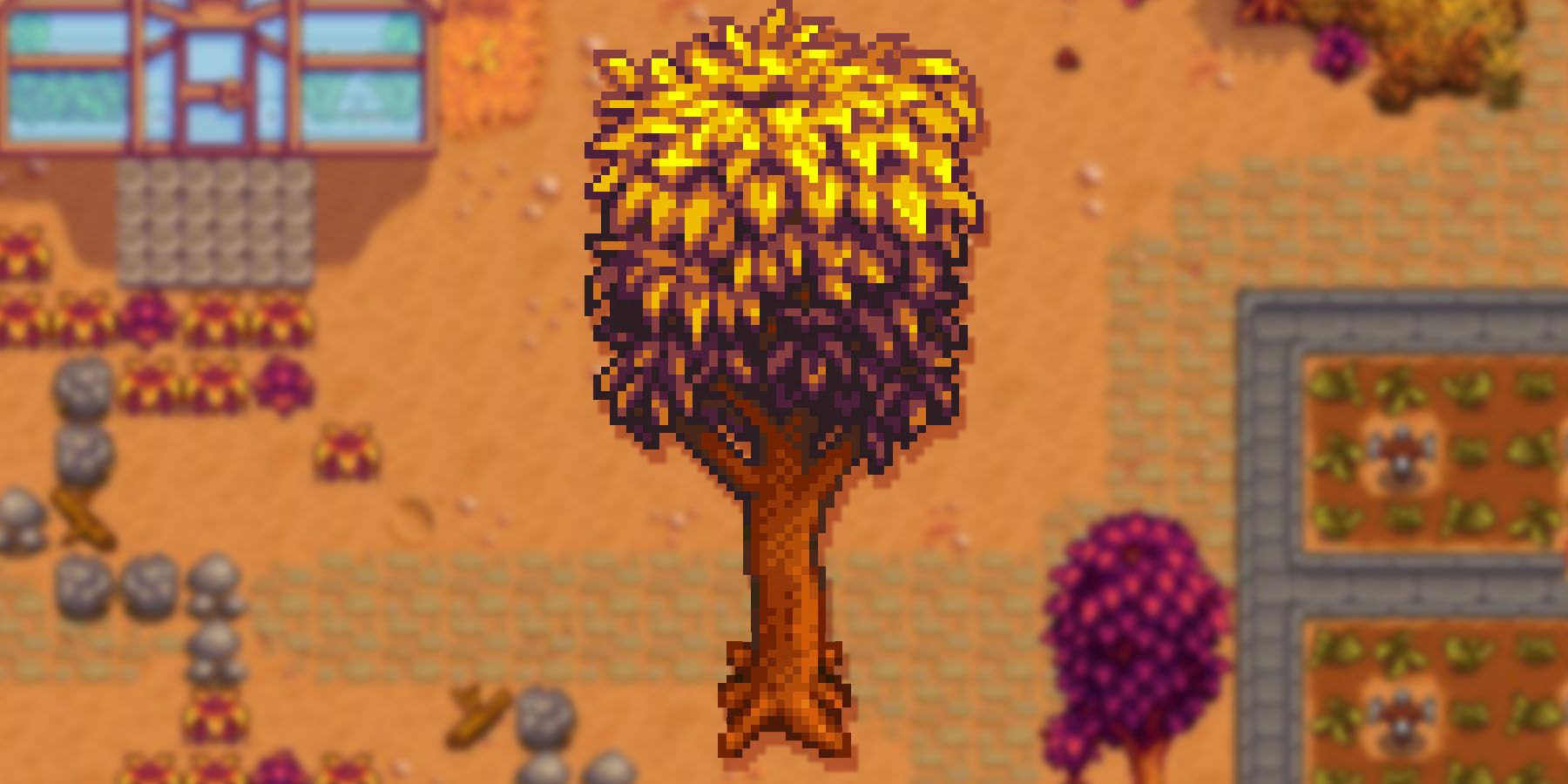Stardew Valley, the realistic farming simulation game developed by ConcernedApe, continues to captivate players with its enchanting world and ever-expanding content. The game’s biggest update – Version 1.5 – has brought plenty of new features and additions to the Valley. From introducing an entirely new world to enriching the farming experience with fresh crops and unique trees, the update has taken the farmer community by surprise.
As of the newest update, Stardew Valley features eight new crops and trees, each offering unique experiences for players. Besides this, a distinct Palm Tree variant has been introduced, which adds an extra layer of diversity to the game.
New Crops Added in 1.5
Ginger
 Ginger is a sharp, spicy root found growing wild on Ginger Island. Players can obtain Ginger by foraging through the Island using a hoe. Tiger Slimes found in the Volcano Dungeon also drop Ginger when killed.
Ginger is a sharp, spicy root found growing wild on Ginger Island. Players can obtain Ginger by foraging through the Island using a hoe. Tiger Slimes found in the Volcano Dungeon also drop Ginger when killed.
Ginger is used to create Ginger Ale and can be used to make Ginger Pickles when placed in a Preserves Jar. This makes Ginger the only “Forage” item that can be pickled. Although it's not ideal for consumption, eating Ginger or drinking Ginger Ale can cure the Nauseated Debuff that is caused when the player is hit by a Putrid Ghost.
Pineapple
 Pineapple are a sweet and tangy new addition to Stardew Valley’s fruit crops. They take 14 days to grow from Pineapple Seeds. While Pineapples are available all year long on Ginger Island, they can be found in the Valley only during the Summer. Once the fruit has been harvested, the plant regrows within 7 days to yield another Pineapple.
Pineapple are a sweet and tangy new addition to Stardew Valley’s fruit crops. They take 14 days to grow from Pineapple Seeds. While Pineapples are available all year long on Ginger Island, they can be found in the Valley only during the Summer. Once the fruit has been harvested, the plant regrows within 7 days to yield another Pineapple.
Pineapple is used in an exotic curry recipe, called the Tropical Curry, which gives players a Foraging +4 Buff when consumed.
Taro Root
The  Taro Root is a starchy vegetable crop that is grown from the Taro Tuber. A Taro Tuber requires daily watering and takes 10 days to fully mature and yield Taro Roots. However, if it is planted near a water body, it grows faster and yields a mature Taro Root within 7 days. Taro Roots can be cultivated all year long on Ginger Island, but only grow during the Summer in the Valley.
Taro Root is a starchy vegetable crop that is grown from the Taro Tuber. A Taro Tuber requires daily watering and takes 10 days to fully mature and yield Taro Roots. However, if it is planted near a water body, it grows faster and yields a mature Taro Root within 7 days. Taro Roots can be cultivated all year long on Ginger Island, but only grow during the Summer in the Valley.
Taro Root is a main ingredient of the traditional Poi recipe that can be prepared using the kitchen of an upgraded farmhouse.
Qi Fruit
 Qi Fruit is another fruit crop introduced in version 1.5. It is only available during Mr. Qi’s Crop Quest. Qi Fruit takes four days to grow from Qi Beans. When the quest is active, The Qi Bean can be found all over Ginger Island.
Qi Fruit is another fruit crop introduced in version 1.5. It is only available during Mr. Qi’s Crop Quest. Qi Fruit takes four days to grow from Qi Beans. When the quest is active, The Qi Bean can be found all over Ginger Island.
Players are rewarded with 100 gems for shipping 500 Qi Fruit to Mr. Qi within the required timeframe. Apart from this quest, the Qi Fruit is not used in any recipes, has little nutritional value, and has a sell price of only 1 g.
Fiber Seeds
 Fiber Seeds are a kind of craftable seeds. The crafting recipe for Fiber Seeds is obtained from Linus in the mail, once the player completes the special order Community Cleanup. Fiber Seeds can even grow in Winter. When planted on tilled soil, they do not require daily watering and take 7 days to fully grow.
Fiber Seeds are a kind of craftable seeds. The crafting recipe for Fiber Seeds is obtained from Linus in the mail, once the player completes the special order Community Cleanup. Fiber Seeds can even grow in Winter. When planted on tilled soil, they do not require daily watering and take 7 days to fully grow.
Upon harvesting with a scythe, a mature Fiber plant drops between 4 and 7 Fiber Seeds. They also have a 10% chance to drop 1 Mixed Seeds packet. If they aren’t protected by a Scarecrow, FIber Seeds can be eaten by Crows.
New Trees
Mahogany Tree
Mahogany Trees are grown from Mahogany Seed . The seeds can be planted in any season and have variable growth times. Fertilized Mahogany Seeds have a 60% chance of growing to the next stage every night, meaning that they usually grow in 7±2 days. Unfertilized seeds have fewer chances and require more time to grow.
Mahogany Seed . The seeds can be planted in any season and have variable growth times. Fertilized Mahogany Seeds have a 60% chance of growing to the next stage every night, meaning that they usually grow in 7±2 days. Unfertilized seeds have fewer chances and require more time to grow.
Mahogany Trees are an easy, reliable source of Hardwood, which was previously a rare resource to collect. Chopping down one Mahogany Tree with an axe produces 8-13 pieces of Hardwood.
Banana Tree
The Banana Tree is a fruit tree that produces a Banana every day during Summer. However, Banana Trees produce Bananas all year round when planted on Ginger Island or inside a Greenhouse.
Banana Trees grow from a  Banana Sapling , which takes 28 days to reach full maturity. They can only grow in the center of a 3x3 square, which is completely clear of other objects and terrain features, such as grass. Although Bananas are not used in any quests, they’re an essential ingredient of the Banana Pudding recipe.
Banana Sapling , which takes 28 days to reach full maturity. They can only grow in the center of a 3x3 square, which is completely clear of other objects and terrain features, such as grass. Although Bananas are not used in any quests, they’re an essential ingredient of the Banana Pudding recipe.
Mango Tree
Mango Trees are fruit trees similar to Banana Trees. They also take 28 days to reach peak maturity and require a clean 3x3 grid to grow. Mango Trees are grown from a  Mango Sapling and bear fruits when they mature. They produce one Mango every day during the Summer in the Valley.
Mango Sapling and bear fruits when they mature. They produce one Mango every day during the Summer in the Valley.
However, Mangos are produced all year round when a Mango Tree is planted on Ginger Island or inside a Greenhouse. Mangoes are used in the recipe for Mango Sticky Rice that provides players with a Defense +3 Buff when consumed.
A new Palm Tree variant
Palm Trees are found on Ginger Island and in the Calico Desert. Stardew Valley’s version 1.5 has introduced a new Palm Tree variant for Ginger Island, that makes them visually distinct from other trees. This tree does not drop any seeds when shaken, hence it cannot be planted elsewhere.
Stardew Valley is available now for Android, iOS, PC, PS4, Switch, and Xbox One.

